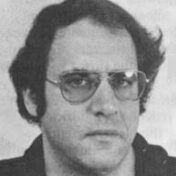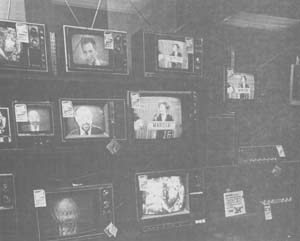Richard Levine
- 1977

Fellowship Title:
- The Making of the Television Season
Fellowship Year:
- 1977
Arledge on Arledge
This is, in a sense, a catch-up newsletter. I’ve heard many nice comments about my first two newsletters on Roone Arledge and television news as well as one persistent criticism: Why didn’t I quote Arledge more, give him his fair say. A couple of people close to Arledge, who knew I had done a long interview with him, were particularly vehement on the point. I have no adequate explanation to offer. I thought the interview was pretty interesting and Arledge every bit as engaging and articulate as I’d been led to believe. I sure worked hard enough to get the interview — he’s also every bit as difficult to reach as I’d been led to believe. Maybe that’s the point. After chasing Arledge down for two solid months and getting nothing but promises, promises but no interview, when it finally happened anything that wasn’t chipped on stone tablets might have seemed a disappointment. In any case, here are excerpts from a three-hour interview with Roone Arledge conducted last November. We talked in his leafy office

Counting Heads: TV Demographics
Unlike non-electronic media, television has no simple way of determining the number of viewers who watch a particular show. There are no tickets to count, coupons to clip or unsold magazines to return. And yet the industry’s raison d’etre is not to deliver a show to an audience but a market to an advertiser. A network or local station sells (or, more accurately, rents) its audience to clients like a herd of cattle, currently at a cost per thousand (cpm) of about $4 for prime-time fare. How to count the heads became one of the industry’s first problems. Into the breach stepped the A. C. Nielsen Co. of Chicago, Ill., a marketing research organization that makes 90 percent of its earnings surveying supermarket shelves but has gained its public notoriety from its TV audience survey, the high-sounding National Television Index. From a Census Bureau master list the company picks a secret sample of 1170 TV homes in randomly selected locations. Nowadays each home is outfitted with a tiny electrical device called an audiometer that records,
Syndicated Television: The Other Side of the Wasteland
Like a Raggedy Ann with glitter in her hair, the workaday world of television syndication has a bright new look. Until recently the business of distributing television programs on a station by station basis has been the poor country cousin of network television, accepting its cast off programs when they were threadbare from use and selling them to individual stations to run during the fringe time periods when the networks switch off their cables. If television was a vast wasteland, four-thirty in the afternoon was its geographical epicenter, a cultural time capsule where religious revivals rubbed shoulders with women’s roller derby, Grade B movies had their last picture showing and everybody loved Lucy for ever and ever. Because individual stations do not have the economic clout of the three networks, original (“first-run”) syndicated programming tends to be directed at the older and rural audiences that the network demographic experts disdain (Heehaw and The Lawrence Welk Show are the two top-rated syndicated programs) or the younger audience that is considered too seasonal (“children,” one network executive
Network Censorship: Coming of Age in TV Land
Every once in a while something comes along that encapsulates the banality of so much network television like one of those tinfoil snow scenes set in a paperweight. It seems to me that just such an incident occurred when novelist Dan Wakefield quit the show he created, James at 15, after losing a battle with NBC censors over an episode that aired February 9, “The Gift.” It’s too bad, for Wakefield was the creative force behind an unusual series, one that provided the rare insight on a regular television program that adolescence is not all Happy Days. But beyond the waste of one man’s time and talent, the story of the show’s development — or “How The Catcher in the Rye Went Awry” — helps explain why the boob tube got its name. Salinger’s novel, in fact, plays a role in the story. During a lunch at “21” in the fall of 1976 David Sontag, the vice president for primetime television at Twentieth Century-Fox, asked NBC programming chief Paul Klein what kind of show he’d really like to develop. “A
Television News and Television Sports —A Profile of Roone Arledge (Part Two)
Last spring when Fred Pierce, announcing Arledge’s appointment as head of ABC News as well as ABC Sports, remarked that “both departments require instant transmission of current events with uncompromising integrity,” there was a fair amount of tittering in the network’s newsroom along with the more universal sound — low moaning. People naturally wondered if the man who had been so successful at making dull entertainment into news would be tempted to try the opposite. From ABC’s point of view the move made perfect sense. The network was now leading the other networks in all areas but news, where it was in fact losing the little ground it held. (Nearly a year after Barbara Walters began co-anchoring the “Evening News” with Harry Reasoner the show had fallen a full rating point further behind the competition.) Moreover, several CBS and NBC affiliates that were considering switching to ABC because of its strong primetime schedule were having second thoughts because of its weak news division. From Arledge’s point of view the move also made sense. He had
